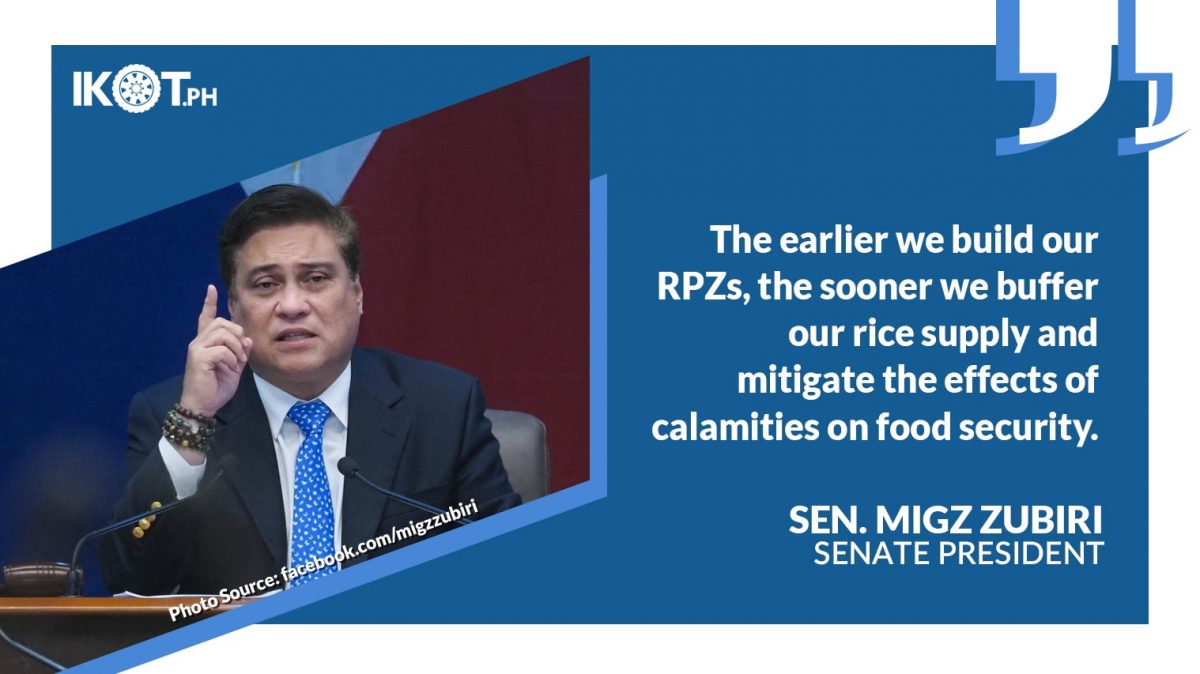The country should start weaning its dependence on imported rice and reduce the risk of food insecurity by establishing rice production zones (RPZs) and inundating it with government support and attention.
Senate President Migz Zubiri said he made this proposal to no less than President Ferdinand Marcos Jr. during the dinner hosted by the Chief Executive for members of the Philippine Senate recently.
In their discussions, Zubiri said the topic veered to talks about the supply of rice in the country and how senators were expressing concerns about the recent announcement of India on a ban on non-Basmati rice exports.
“I told the President about my proposal to establish RPZs, and he found it to be very interesting.”
“I told the President about my proposal to establish RPZs, and he found it to be very interesting. In my opinion, we cannot be certain about our food security today and then be insecure tomorrow because of factors beyond our control, or just because our sources of rice imports such as India have become uncertain,” the leader of the 24-member chamber said.
“Typhoons Egay and Falcon blew a big hole in our food basket regions in the North. This will surely have an effect on the supply of agricultural products, including rice. The earlier we build our RPZs, the sooner we buffer our rice supply and mitigate the effects of calamities on food security,” the veteran legislator added.
Under the seasoned lawmaker’s proposal, provinces can be grouped into one RPZ and Marcos, as concurrent Secretary of Agriculture, can assign an Undersecretary or Assistant Secretary to handle a specific RPZ each and to make sure they hand hold the Farmers until their crops reach maximum efficiency of production. They will focus on enhancing capabilities to produce rice, like pouring support for seedlings, fertilizers, pest control and modernized equipment.
The senator from Bukidnon said in establishing RPZs, the government can take its cue from RA 8435 or the Agriculture and Fisheries Modernization Act of 1997, which mandates the Bureau of Soils and Water Management to identify Networks of Protected Areas for Agricultural and Agro-industrial Development (NPAAADs).
These NPAAADs, he further said, are ideal RPZs and can be a good starting point because the bureau maps out all fertile, rich and irrigable lands suitable for crop production, including the planting of rice.
“Kailangan tayong tumingin sa ibang lugar para mapunan ang deficit.”
“The two recent typhoons badly hit Regions I, II and III, which roughly accounts for 40% of rice input and 80% of corn production. Kaya kailangan tayong tumingin sa ibang lugar para mapunan ang deficit,” Zubiri stressed.
GOVERNMENT SUPPORT FOR TYPHOON-AFFECTED FARMERS
He also pushed for quick turnaround programs for affected farmers in the North for replanting to allow the immediate recovery of rice granaries in typhoon-hit areas.
Under the 2023 General Appropriations Act, the main programs under the DA-Office of the Secretary that can be used to aid rice farmers include:
1. National Rice Program
a. Production support services – P22.86 billion
b. Extension support services – P1.26 billion
c. Research and Development – P708.52 million
d. Agricultural Equipment and Facilities – P4.73 billion
e. Irrigation – P721.24 million
2. Rice Competitiveness Enhancement Program (P10 billion)
a. P5 billion for rice farm equipment
b. P3 billion for the development, propagation and promotion of inbred rice seeds
c. P1 billion for credit, to be managed by LBP and DBP
d. P1 billion for extension services on rice crop production
Zubiri said the government can tap the unutilized portions of these funds to help affected farmers.
“Our farmers need help in bouncing back from the adverse effects of Egay and Falcon. Helping our farmers also help the country’s food security cause,” he concluded.



